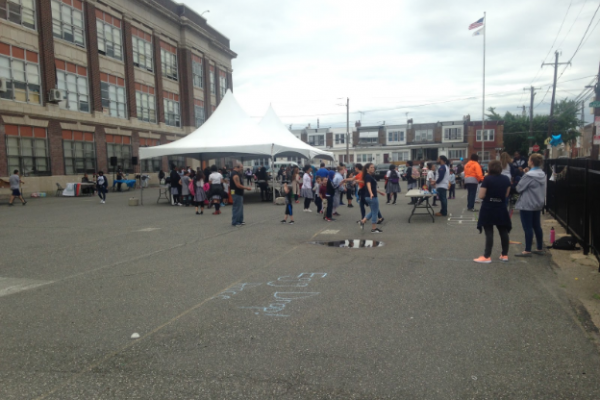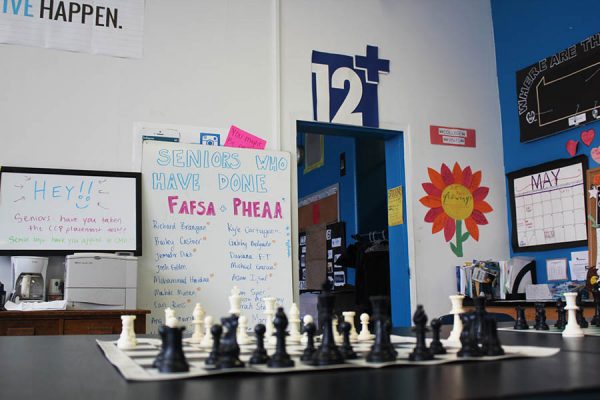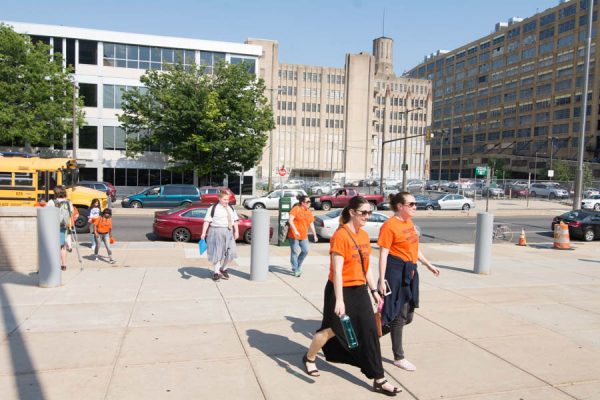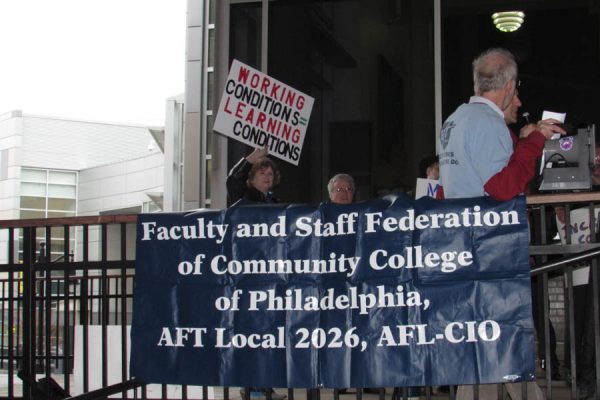Prisons Today: Eastern State Penitentiary Showing Hard Facts on Mass Incarceration
For the last 30 years, incarceration rates in America have skyrocketed; our country’s current prison population has reached more than 2.2 million. This is what the Eastern State Penitentiary’s (ESP) newest exhibit, “Prisons Today: Questions in the Age of Mass Incarceration”, aims to teach those visiting the museum. This installation was first opened to the public in May and has received positive reviews for the way it informs museumgoers about the American prison system.
The exhibit has been in the works for three years and is scheduled to remain open for the next three. ESP’s mission has always been to tell the stories of the penitentiary itself, but also to inform visitors on how the global prison system has become what it is today.
Sean Kelley, ESP’s Director of Interpretation, told Spirit News that the museum began looking into examining contemporary prison issues in 2010.
“Anyone who studies the prison system, whether Republican or Democrat, they all agree that this is not right,” said Kelley, who is also the administrator of the exhibit.
Their exhibit features visuals that show how out of control the prison system has gotten in America. One of the first things patrons see as they enter the prison courtyard is a 16-foot tall bar graph that weighs around 3,500 pounds. Aptly called the Big Graph, the giant structure was installed in 2013 and is adorned with information that describes the amount of people incarcerated in the world and how the racial composition of prisons has changed from 1970 to today.
The tallest part of the graph lists various countries in the world and where they rank in terms of incarceration rates per 100,000 citizens. On the very end of the graph is the United States — we incarcerate more people than any other country in the world. Of every 100,000 people in the U.S., 700 are in prison. The second-highest incarceration rate is Rwanda, where 527 people are incarcerated per 100,000. The graph shows how incarceration rates have grown steadily since the 1990s, reaching its peak in 2010. There is still open space on the graph and Kelley says the graph will be updated through 2030.
Passing through another doorway, patrons enter the “Prisons Today” exhibit. Upon entering the installation viewers are presented with another large graph showing incarceration data from 1970 and 2015. An interesting point the graph makes is that violent crime rates have been incredibly consistent during the timespan in which prison population massively increased in America.
A video portion of the exhibit begins with a representation of how mass incarceration began. It outlines how politicians began introducing the Three-Strikes Law to various areas in an attempt to curb crime. It also sheds some light on where these policies went wrong and how people in positions of power plan to change the issue that has been created.
To the left of the entrance is an interactive part of the exhibit: as soon as you look into the room there is a giant sign that asks, “Have you ever broken the law?” Below the question is a set of possible ways visitors may have broken the law, including underage drinking, drug use, insurance fraud, etc.
If you answer no, you are advised to take a right. If you answer yes, you are advised to take a left. Watching the people enter the exhibit, it was uncommon to find people that have never broken the law. Nobody’s perfect.
To the left is a section about the different ways people police and deal with criminals all over the world. Then there also is a small computer for people to vote on how they feel criminals should be dealt with after reading each one. The test can also be taken online as well.
If you continue along this side, you can find a wall of confessions. Each confession has a little red dot above it and in the middle of the wall there are two options — “People in Prison” and “Visitors to ESP.” When you click on the button next to “People in Prison”, confessions that came from a real incarcerated person are lit and vice versa.
If you chose to turn right following the “Have you ever broke the law?” question, you learn more about the price of going to prison. One chilling fact was that the average college student spends $16,000 on tuition each year, but it costs an annual average of $42,000 to keep a single prisoner incarcerated. At the end of this portion of the exhibit is a section that explains various actions that are helping change the prison system in America, outlining the policies of four states that have significantly improved their incarceration rates.
“California has reduced the restrictions on parole rather than trying to find ways to make people trip up on their parole,” Kelley said. This helps keep prisoners out of prison after their sentences have been served. Other states like New Jersey, New York and Texas have also taken extreme measures in making their prison system better for their economies and families by making cheaper alternatives or reducing the number of harsh laws.
“All four states have lowered their violent crime,” Kelley said. “It doesn’t seem like something anyone can argue with. We think those states are clearly making progress.”
Continuing past these displays is an interactive section called Early Experiences Matter, which attempts to give visitors a better understanding of the factors that lead to incarceration. It’s important for kids of different backgrounds to take these quizzes and share the results with friends. It can help someone who might be unaware of such issues and makes it clear that there are many factors that lead to incarceration like someone’s neighborhood, education, race, etc.
“Once juveniles find themselves in prison, it’s hard to break that cycle,” Kelley said. “It’s hard for them to bounce back from that.”
Across the way is a documentary film created by Gabriela Bulisova entitled “Six Voices” that covers real-life families that in some way are affected by today’s prison system. It can be viewed here.
The installment is still under construction, as it is in its preliminary stages. After some studies and interviews on the visitors of this installment, the staff will be making various changes to the exhibit to make it more appealing for people.
“We want to see how people move through the space,” Kelley said. “Stopwatches will be used to see how long people view certain sections.”
In the fall they will make more adjustments. There is room to expand the exhibit. As of now, Prisons Today seems to be doing a great job of catching people’s attention and helping them acknowledge the reality of mass incarceration. •








